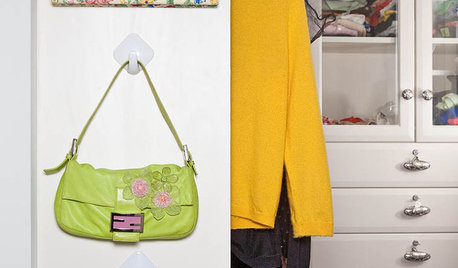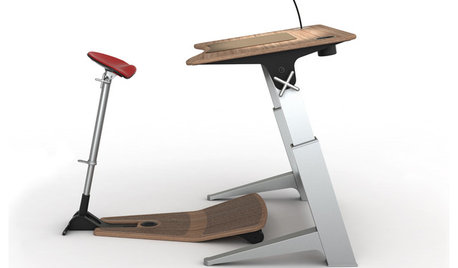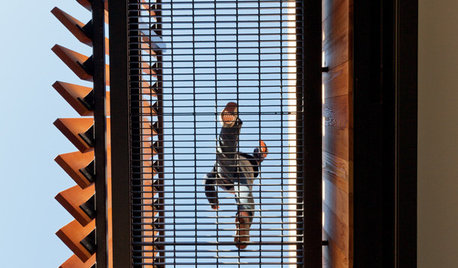Bonsai training: Weights instead of Wire?
the_fire
16 years ago
Related Stories

STORAGEBedroom Storage: 12 Ways to Work Your Wardrobe
Instead of letting the mess in your closet overwhelm you, tackle it head on with these smart and simple solutions
Full Story
HOUZZ TVHouzz TV: Fun Family Living in 980 Square Feet
In a place known for going big, a family of 4 opts for creative space savers and subtle luxuries instead
Full Story
HOME OFFICESStand-Up Desks Rise to Health Challenges
Sitting all day may be wrecking your health. Are you going to stand for that?
Full Story
DECORATING GUIDESHere's How to Steer Clear of 10 Top Design Don'ts
Get interiors that look professionally styled even if you're taking the DIY route, by avoiding these common mistakes
Full Story
THE ART OF ARCHITECTUREDesign Workshop: Put Industrial Mesh to Work Around the Home
From open gratings to fine weaves, commercial metal mesh is a durable and beautiful choice for residences too
Full Story
CONTEMPORARY HOMESHouzz Tour: A Noir Farmhouse in Napa
A new farmhouse in St. Helena blends modern and rustic with a big dose of bold
Full Story
MOST POPULARBudget Decorator: Shop Your Home for a New Look
Redecorate without spending a cent by casting a creative eye on the showroom called home
Full Story
BATHROOM DESIGNHow to Settle on a Shower Bench
We help a Houzz user ask all the right questions for designing a stylish, practical and safe shower bench
Full Story
PETSPet-Proofing Your Home: A Room-by-Room Guide
Not all pet dangers are obvious. Keep furry friends safe and sound by handling all of these potential hazards
Full Story
LIFEYou Showed Us: 20 Nutty Home Fixes
We made the call for your Band-Aid solutions around the house, and you delivered. Here's how you are making what's broken work again
Full Story







funkymiaow
scenter
Related Professionals
Carson Landscape Architects & Landscape Designers · Parole Landscape Architects & Landscape Designers · Bridgeport Landscape Contractors · Cary Landscape Contractors · Chattanooga Landscape Contractors · Huntley Landscape Contractors · Lakewood Landscape Contractors · Round Lake Landscape Contractors · Tuscaloosa Landscape Contractors · West Covina Landscape Contractors · Clearfield Landscape Contractors · Bellingham Decks, Patios & Outdoor Enclosures · King of Prussia Decks, Patios & Outdoor Enclosures · Paradise Valley Decks, Patios & Outdoor Enclosures · Quincy Decks, Patios & Outdoor Enclosuresbonsaikc
lucy
dsdevries